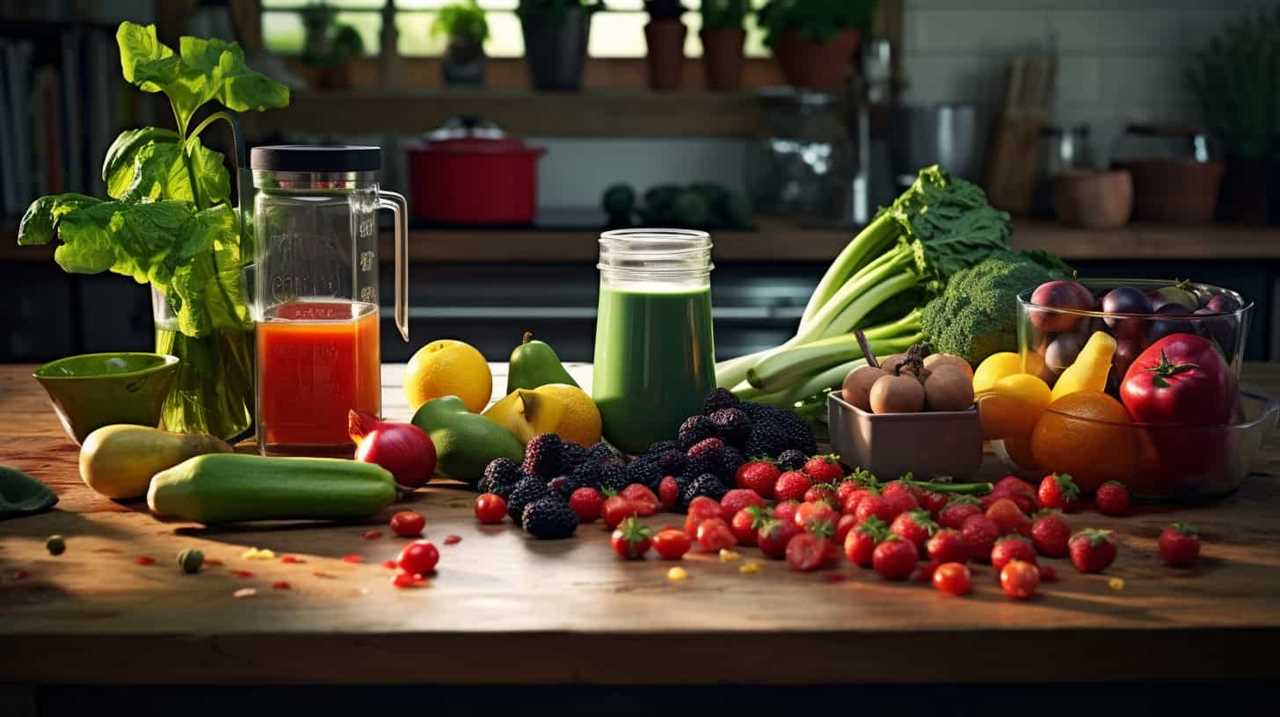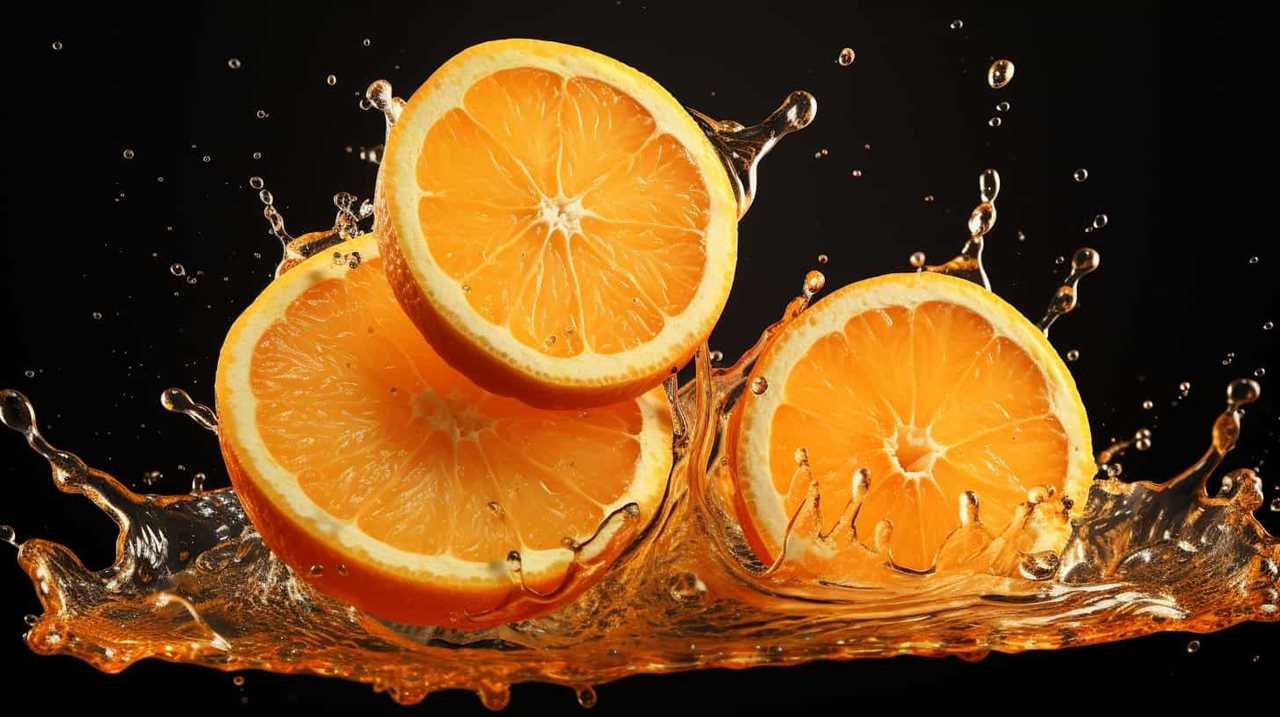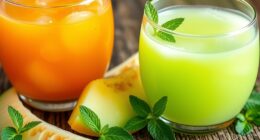
Juicing fans, are you prepared to delve into a thrilling quest for precision? Today, we’re delving into the delightful specifics of orange juice, aiming to unravel a tantalizing mystery: how many oranges are needed to fill a single cup? The answer might surprise you, as factors such as the size and juiciness of each orange can greatly influence the outcome. On average, you’ll need about 3 to 4 medium-sized oranges to extract enough juice for an 8-ounce cup. So, just how much juice from oranges are you getting per squeeze? It all depends on the fruit’s ripeness and variety!
Through our active exploration, we’ll calculate the precise orange to juice ratio, consider the factors that affect the number of oranges needed, and explore the various methods of extracting juice.
So, gather ’round, fellow juice enthusiasts, as we squeeze out the truth and serve you the knowledge you seek.
Key Takeaways
- The most common method of juicing oranges involves using a juicer, either manual or electric.
- The orange to juice ratio is affected by factors such as ripeness, size, juicing method, and orange variety.
- The number of oranges needed for a desired amount of juice depends on the orange variety and ripeness.
- There are different methods of extracting juice from oranges, including blending, juicing, and hand squeezing, each with its own benefits and desired juice texture.
The Juicing Process
We’ll start by explaining the juicing process in making a cup of orange juice. Juicing techniques vary, but the most common method involves cutting the oranges in half and using a juicer to extract the juice. Some people prefer to use a manual juicer, while others opt for electric juicers for faster results.
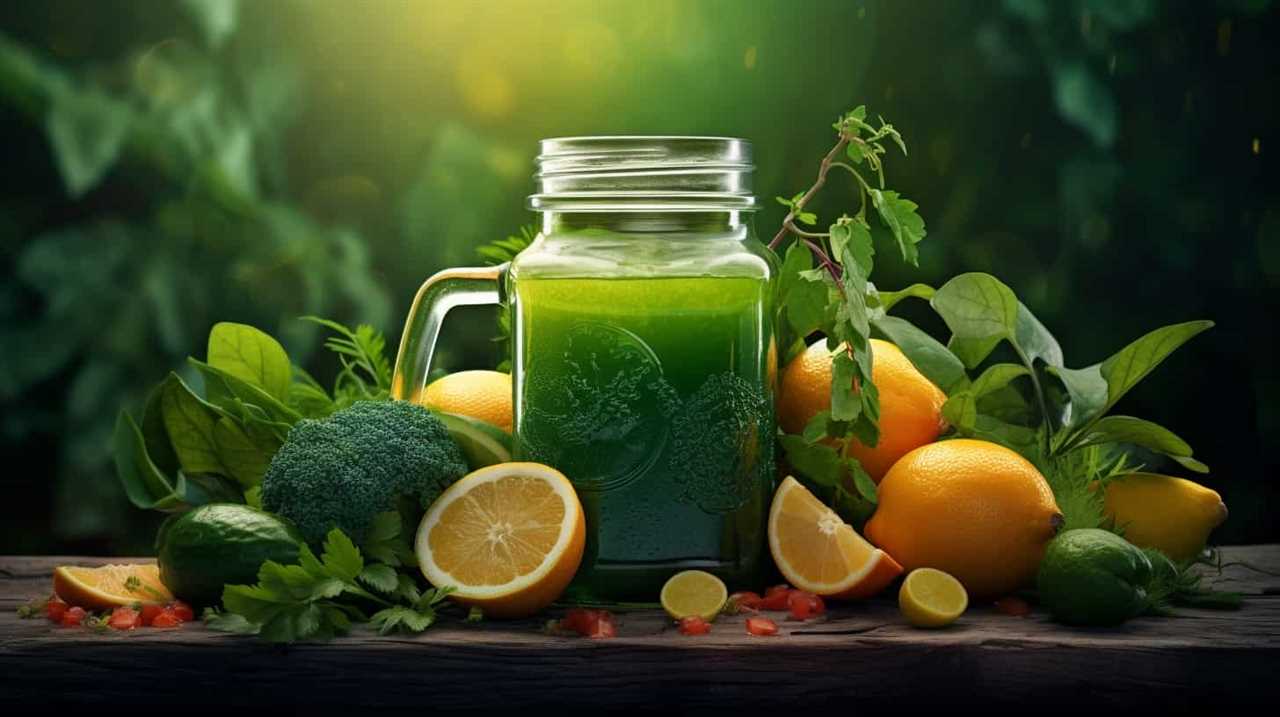
Regardless of the technique, the health benefits of freshly squeezed orange juice are numerous. Oranges are packed with vitamin C, which is known to boost the immune system and improve skin health. They also contain flavonoids and antioxidants that have been linked to reducing the risk of chronic diseases.
Calculating the Orange to Juice Ratio
To accurately determine the orange to juice ratio, we need to measure the amount of juice obtained from a specific number of oranges. Calculating the yield and juicing efficiency can help us understand how many oranges are needed to make a cup of orange juice. Here are some important factors to consider:
- Ripeness of the oranges: Ripe oranges tend to yield more juice compared to unripe ones.
- Size of the oranges: Larger oranges generally produce more juice than smaller ones.
- Juicing method: Different juicing methods may have varying efficiency levels, affecting the amount of juice extracted.
- Varieties of oranges: Some varieties are naturally juicier than others, which can impact the orange to juice ratio.
By taking these factors into account, we can determine the optimal number of oranges needed to make a cup of orange juice.
Now, let’s explore the various factors affecting the number of oranges needed.

Factors Affecting the Number of Oranges Needed
When considering the number of oranges needed for a cup of orange juice, we must take into account several factors that can influence the quantity required.
Firstly, the varieties of oranges can affect how many are needed. Some varieties, like Valencia oranges, are known for their high juice content, while others, like Navel oranges, have less juice. It’s important to choose the right variety to ensure maximum juice yield.
Secondly, the ripeness of the oranges also plays a role. Ripe oranges are juicier and easier to extract juice from, requiring fewer fruits to achieve the desired amount. On the other hand, underripe oranges may be drier and require more to produce the same amount of juice.
Different Methods of Extracting Juice From Oranges
Our preferred method of extracting juice from oranges is by using a citrus juicer, as it allows us to efficiently and effectively extract the maximum amount of juice from each fruit.

Here are the different methods of extracting juice from oranges:
- Blending: This method involves blending the whole oranges, including the pulp and flesh. While it retains the fiber content, it may result in a thicker and pulpier juice.
- Juicing: This method involves using a juicer to separate the juice from the pulp. It yields a smoother and pulp-free juice, perfect for those who prefer a lighter texture.
- Hand squeezing oranges: This traditional method involves manually squeezing oranges to extract the juice. While it may require more effort, it allows for greater control over the amount of pulp in the juice.
Each method offers its own benefits, so choose the one that suits your preferences and needs.
Tips for Maximizing Juice Yield From Oranges
By properly selecting and preparing the oranges, we can maximize the juice yield and enjoy a refreshing glass of orange juice. To ensure the best juice extraction, it is important to choose ripe oranges that are heavy for their size and have a firm texture. Additionally, the oranges should have a bright orange color and a fragrant aroma. Once the oranges are selected, there are a few juice extraction techniques that can help maximize the yield. Squeezing the oranges by hand or using a citrus juicer can both be effective methods. However, for those looking to extract every last drop of juice, using a juicing machine or a manual citrus press can be very efficient. By following these tips and techniques, we can make the most of our oranges and enjoy a delicious glass of freshly squeezed orange juice.
| Juice Extraction Techniques | Selecting Ripe Oranges |
|---|---|
| Hand-squeezing | Heavy for their size |
| Citrus juicer | Firm texture |
| Juicing machine | Bright orange color |
| Manual citrus press | Fragrant aroma |
Frequently Asked Questions
How Many Calories Are in a Cup of Orange Juice?
In a cup of orange juice, the number of calories can vary depending on the brand and type. However, on average, a cup of orange juice contains around 110 calories. Orange juice is also rich in vitamin C and other nutrients, making it a healthy beverage choice.
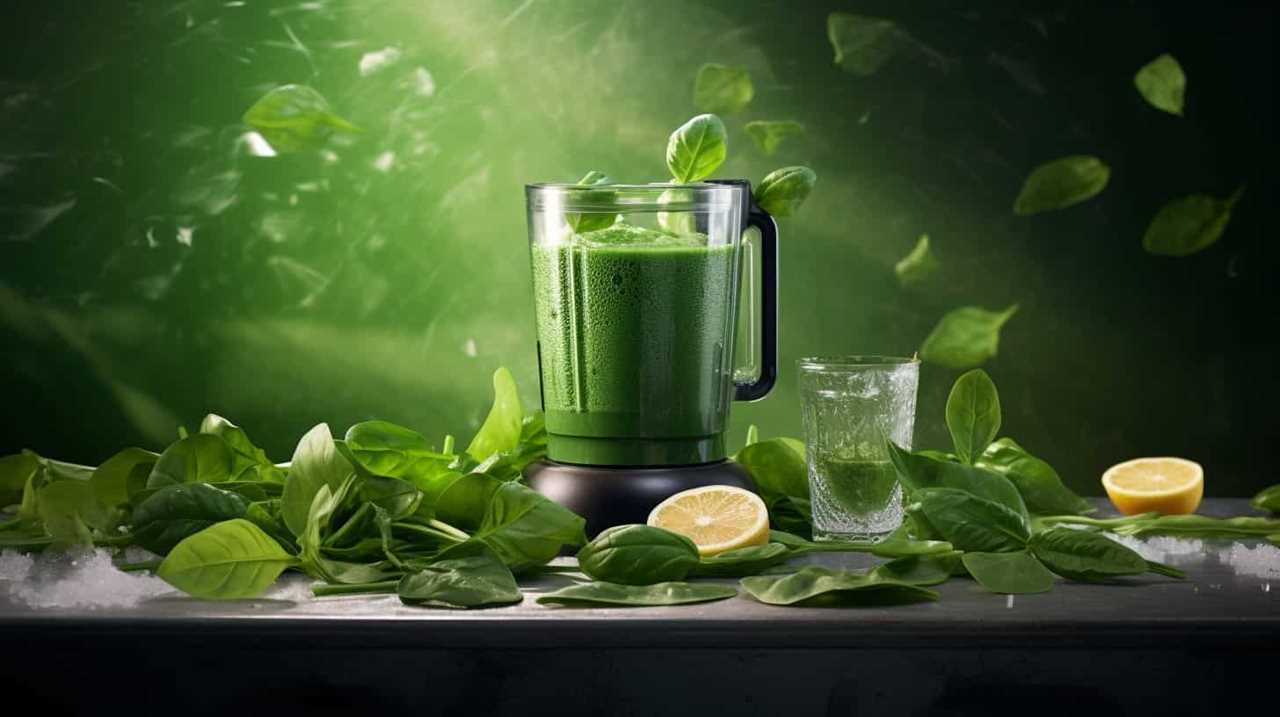
Can I Substitute Store-Bought Orange Juice for Freshly Squeezed Orange Juice in a Recipe?
We can substitute store-bought orange juice for freshly squeezed in a recipe. However, the taste may differ. It’s always best to compare the flavors beforehand to ensure the desired outcome.
How Long Does Freshly Squeezed Orange Juice Last in the Refrigerator?
Freshly squeezed orange juice lasts about 2-3 days in the refrigerator. To extend its shelf life, store it in an airtight container and place it in the coldest part of the fridge.
Can I Freeze Freshly Squeezed Orange Juice for Later Use?
Yes, we can freeze freshly squeezed orange juice for later use. Freezing fruits helps preserve nutrients and extends their shelf life. It’s a convenient way to have a refreshing glass of orange juice whenever we want.
Are There Any Health Benefits to Drinking Orange Juice?
Drinking orange juice can provide several health benefits due to its high nutritional value. It is rich in vitamin C, antioxidants, and other essential nutrients that support immune function, heart health, and overall well-being.
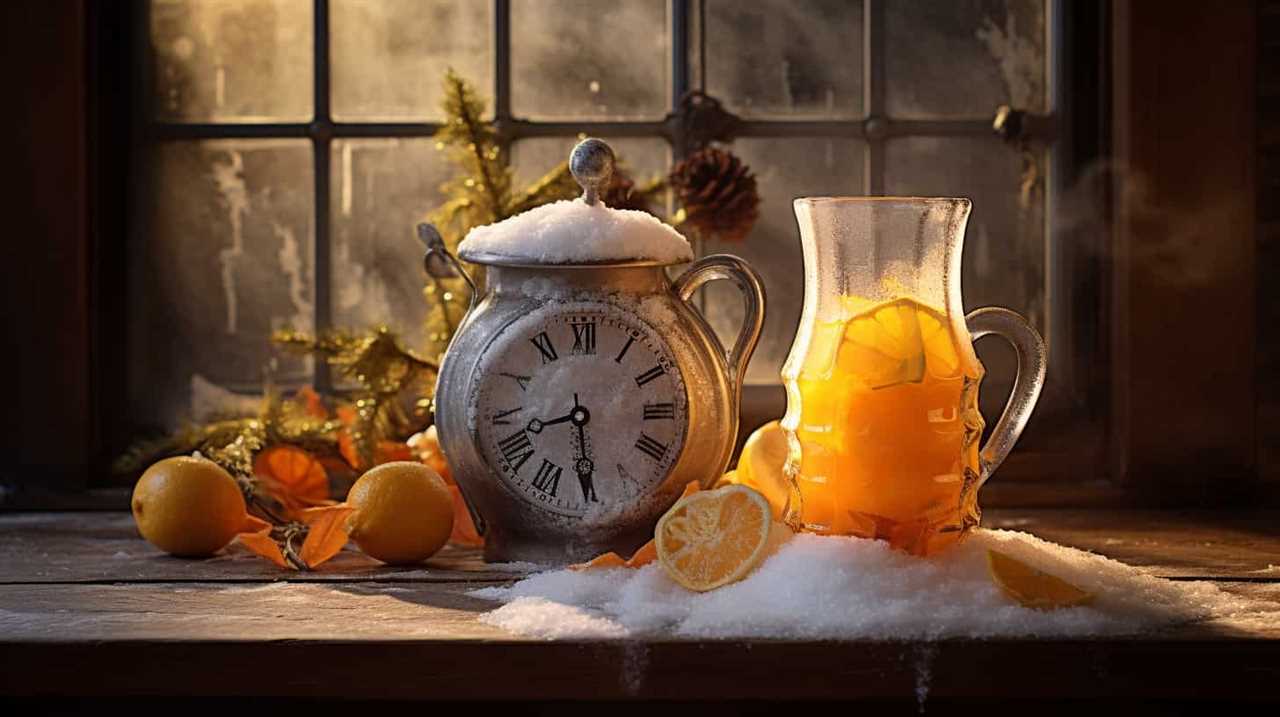
Conclusion
In conclusion, the number of oranges needed to make a cup of orange juice depends on various factors such as the juicing process used and the size and juiciness of the oranges. By considering these factors and using efficient methods of extraction, you can maximize the juice yield from each orange.
So, next time you’re craving a refreshing glass of orange juice, remember to calculate the orange to juice ratio and make the most out of your oranges.
Susannah expertise lies in researching and compiling evidence-based content on juicing, nutrition, and overall health. She is committed to ensuring that The Juicery World offers accurate, up-to-date, and trustworthy information to empower readers to take control of their health. Susannah’s goal is to inspire individuals to embrace juicing as a way to nourish their bodies and live their best lives.


